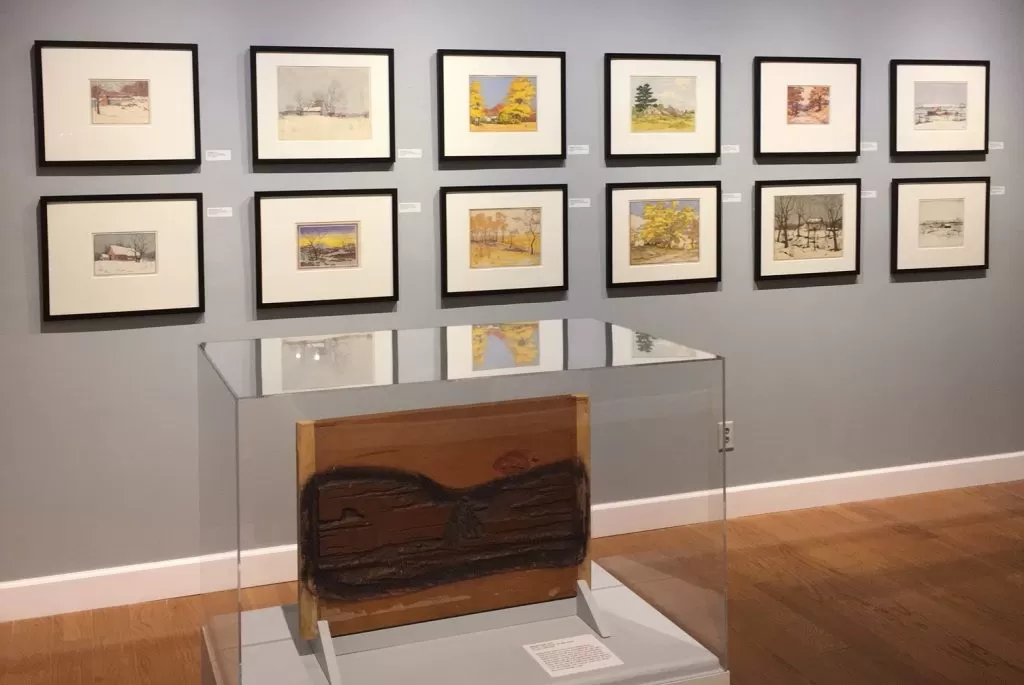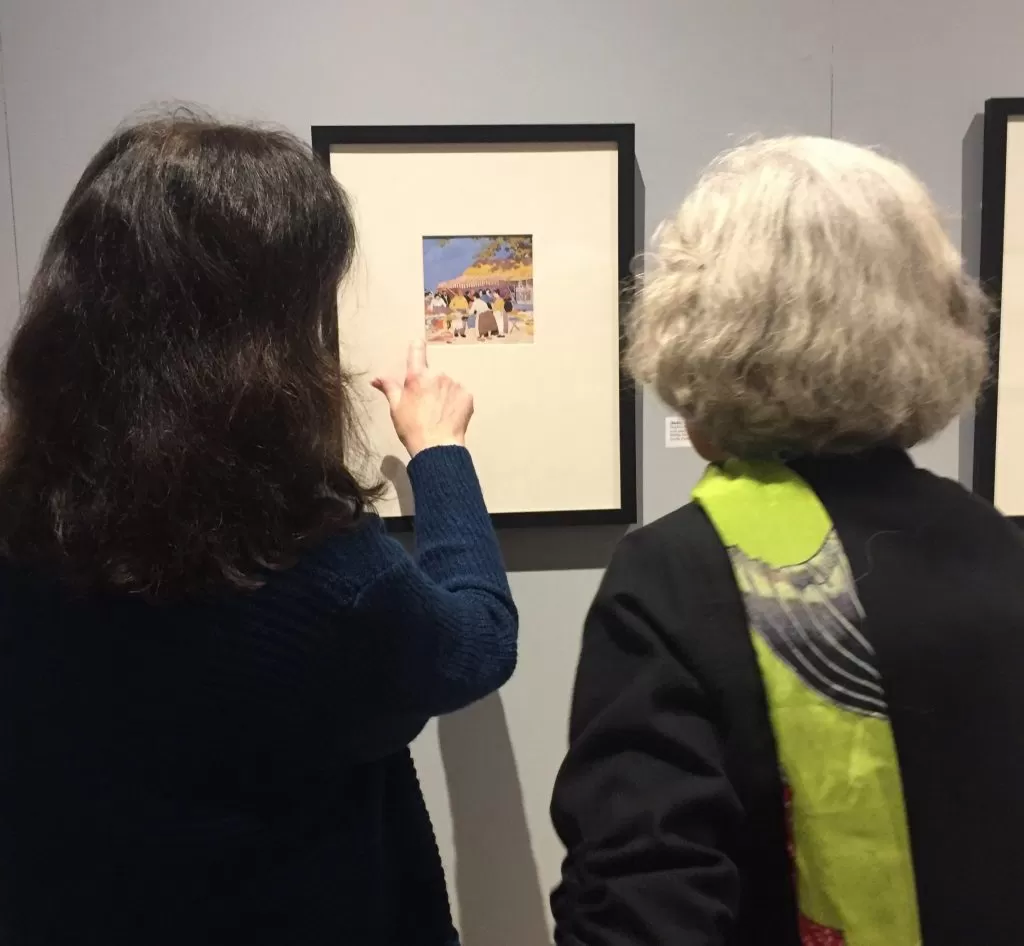From Dresser Drawer to Museum Wall: The Traveling Art of Norma Bassett Hall
“Chipping the Block, Painting the Silk: The Block Prints and Serigraphs of Norma Bassett Hall.”
Wright Museum of Art, Beloit College, Beloit, Wisconsin, Exhibition lasts until May 20.
By Joby Patterson, author
Seldom does an art historian chance upon a complete body of unpublished information concerning an artist’s life and career. Could such fortune happen to me on my investigative journey with Norma Bassett Hall?
From an article written in 1924, Norma herself reminded me that reaching a goal could be difficult. An interviewer reported, “Mrs. Hall, from her earliest days, was determined to be an artist and stuck to it through thick and thin, and many times it was thin indeed.”
Like Norma’s life, my research journey frequently followed a thorny path.

Rewards, however, lie in discoveries that create forward surges. For example, in his Rolodex, an art dealer found an old phone number—from 1965 or so—of a distant Hall family member. A simple phone call to a forty-year-old phone number worked! I turned up a mother lode—sixty prints, stored in boxes, under beds, and in dresser drawers. Most had hardly seen the light of day.

As I hired photographers to proceed with the book’s publication, I realized that here were the seminal works that would be seen only in my book. I had finally located the prints: what was preventing me from bringing them all back together into an encompassing, coherent exhibition?
Thus Norma Bassett Hall’s original personal collection was reunited to form the first solo exhibition since her death in 1957. The prints have traveled to several exhibition venues since 2014 and are currently on view at the Wright Museum of Art, Beloit College, Beloit, Wisconsin, until May 20.

The Beloit College exhibition represents the fifth time that Norma’s prints have been mounted as a group. As far as I know, even Norma never saw the entire group at once. With walls at the Wright Museum of Art painted a soft grey to correspond with Norma’s values of expressing “peace and tranquility,” I thought again, for the fifth time, how stunning the group is as a unit.

I remain deeply impressed by the seven Old Sycamore images showing the build-up of the block coloration. Also by the cherry wood block, perhaps the only block left from an estimated three hundred, which, I am now sure, is actually a bread board in the manner of her teacher, Mabel Royds. And by the power of simplicity in design and color in Some Prints of Cannon Beach—all derived from Norma’s training in Arts and Crafts ideas expressed by Arthur Wesley Dow.
Why was this artist not known? Norma Bassett Hall was modest, soft spoken and unassuming. Arthur, her artist soul-mate, was vocal and outgoing. The loss of personal papers is a strong deterrent to revisiting any artist’s life, and the task took more than ten years.
Norma Bassett Hall now has more visibility. In addition, the Arts and Crafts movement, the history of early twentieth century printmaking in America, and the possible inspiration for other artists to leap out to explore their own dimensions, I hope, has been realized through both exhibitions and my book on her.
What I learned from this long-travelled road was that the journey itself is the reward, for it is through the journey that the researcher comes to know the subject.

The book, Norma Bassett Hall: Catalogue Raisonné of the Block Prints and Serigraphs (Portland: Pomegranate Communications, 2014), is available on the Internet, or you can get a signed copy from me at [email protected] for the publisher’s list price, $50 (plus free shipping).
– Joby Patterson
